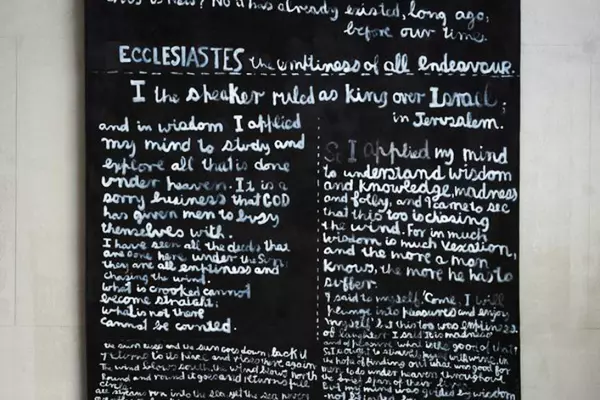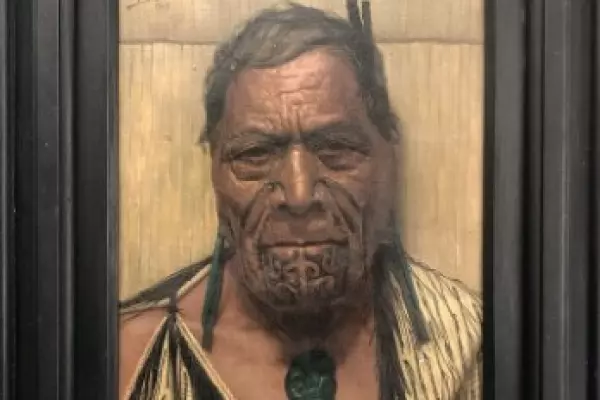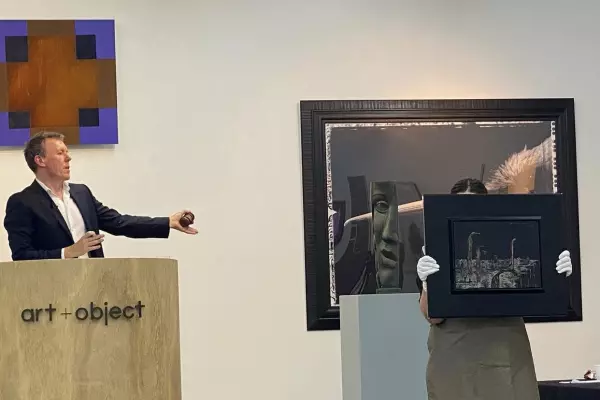Buying art for investment means that at some stage you may need to sell to realise your investment. Although this might seem difficult if the works have become part of the wallpaper of your life, I firmly believe one of the reasons you can own art is to have a realisable asset if you need it. Plus, you won’t pay tax on any income gained from the sale.
Knowing how and when to sell is an important part of this process, because taking advantage of market conditions and placing the work with the person or business best placed to sell it can make a huge difference to the selling price.
If you have bought predominantly through a gallery, you might wish to approach the dealer who sold you the work in the first place to resell it on your behalf. The dealer will have a ready-made market for the artist’s work, and if you have bought a great example then they could have a client on hand whom they can on-sell it to.
The gallery will usually offer or negotiate a net price to you and then place their commission on top of that, which is included in the price paid by the buyer. A small number of galleries also handle works on the secondary market and may resell any that are out of their usual artist stable if they have clients on-hand to offer them to. The gallery may be able to offer you a higher net amount than if you sold through an auction, but if the work isn’t sold immediately and goes into gallery stock, it might take longer to sell than having a set sale date.
An art consultant might be a wise choice if you have a very expensive work which you don’t want to offer on the open market. Many of the works at the top end of the market both in New Zealand and internationally are transacted privately and this is a great option if the buyer and the seller want to remain discreet.
Often clients purchasing at the top end are wanting to buy significant examples of an artist’s work and are prepared to wait years to acquire the right example. They may be prepared to pay a premium to secure the work without the competition on the open market. This strategy can also work well if there are very few comparable prices to benchmark against, as a sale in this manner means the negotiation can be done in private, rather than having a work put up for auction and failing to sell, leaving the impression that the estimate given was too high.
Selling at auction can work very well if you have works by an artist who isn’t represented by a gallery, if you have a large amount of work to move on or if you are under time pressure to sell. An auction will give you a set date for when the works will be offered, and provided there are multiple parties interested in your works, competition through bidding should hopefully increase the price over the reserve, which is the minimum the work can sell for on the day.
When choosing your method of sale, it’s also important to look at your sale location. An artist who worked a lot and is very well known in Wellington, such as Melvin Day, may sell better there than in Auckland. If you have a work painted in the 19th century, consider giving it to a dealer or auction house who specialises in historical paintings. If an auction house has just had a record sale or great success with the work of a certain artist and you own one yourself, consider talking to them about handling your work. The staff will know which people were interested in the previous work and will be able to market your work directly to them in advance of the sale.
Sometimes having multiple works by one artist in an auction can work well as it can bring in a pool of competing buyers who may miss out on the one they want, but could then support the other works instead. This was evident at a recent International Art Centre auction which had a number of Banksy prints on offer; one set of buyers who missed out on the first one they wanted successfully bid on the next work.
Finally, be sure to closely compare the terms of what each sale outlet is offering. A sale through a dealer gallery will usually just involve a straight percentage of the sale or a commission, without any additional costs, and an art consultant will often work in the same way. An auction house has a bundle of charges including a vendor’s commission, insurance and possibly other fees such as for photography, plus GST, and this is deducted off the hammer price once the work is sold.
If selling through an auction, it’s important to get a couple of different quotes and see what each outlet is offering for its fee, including what marketing is being offered and where the work is being placed in the catalogue (from the start to the middle is preferable).
Also, look carefully at the suggested sale estimates and reserves as these can vary depending on the market the auction house may have for your work or works. The highest estimate isn’t always the best option. It’s important to choose a person or a business you think understands the pieces on offer and can do the best job to market and sell them in the most successful way.
Briar Williams is a specialist fine art valuer at artvaluationsnz.com















